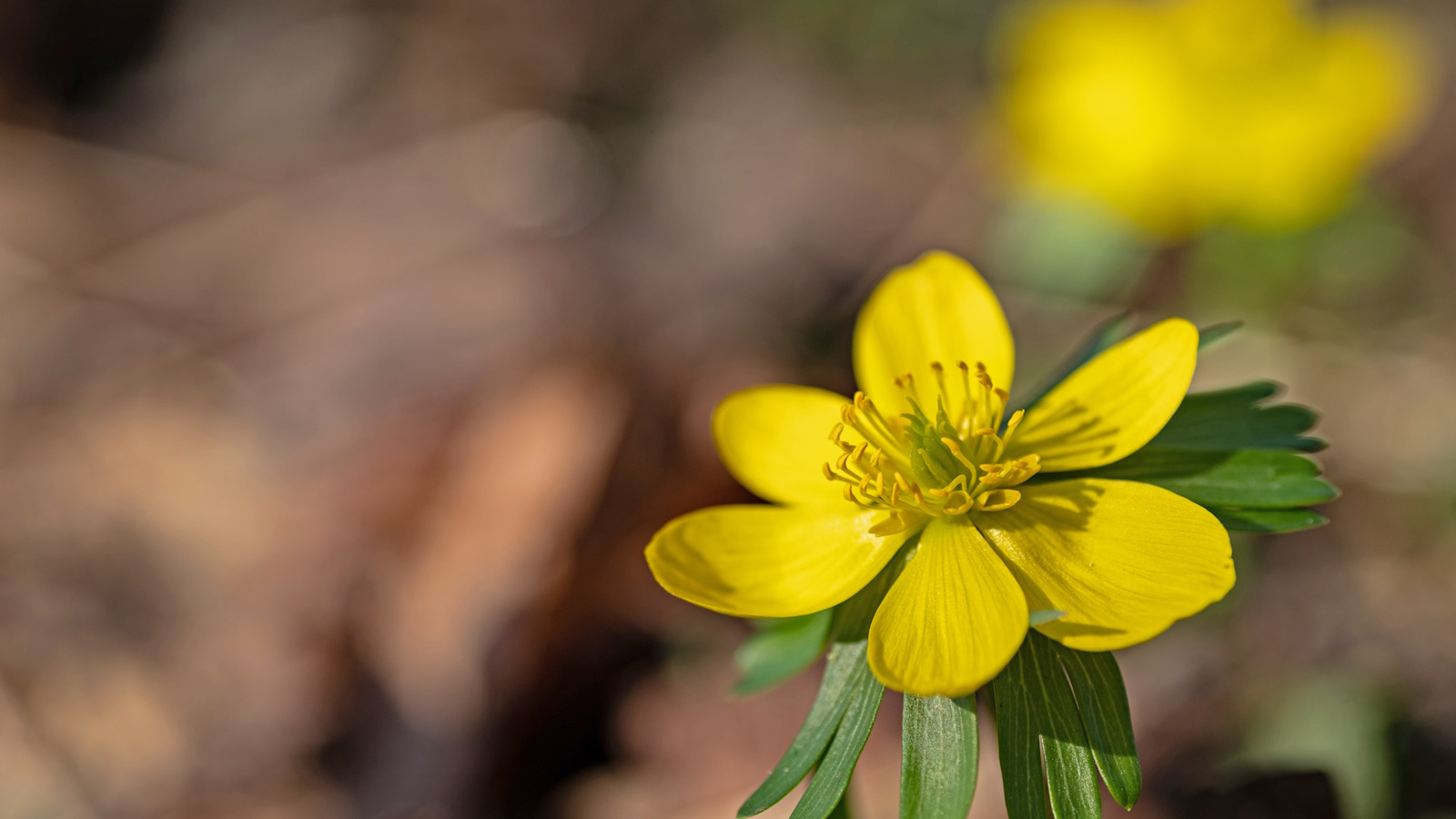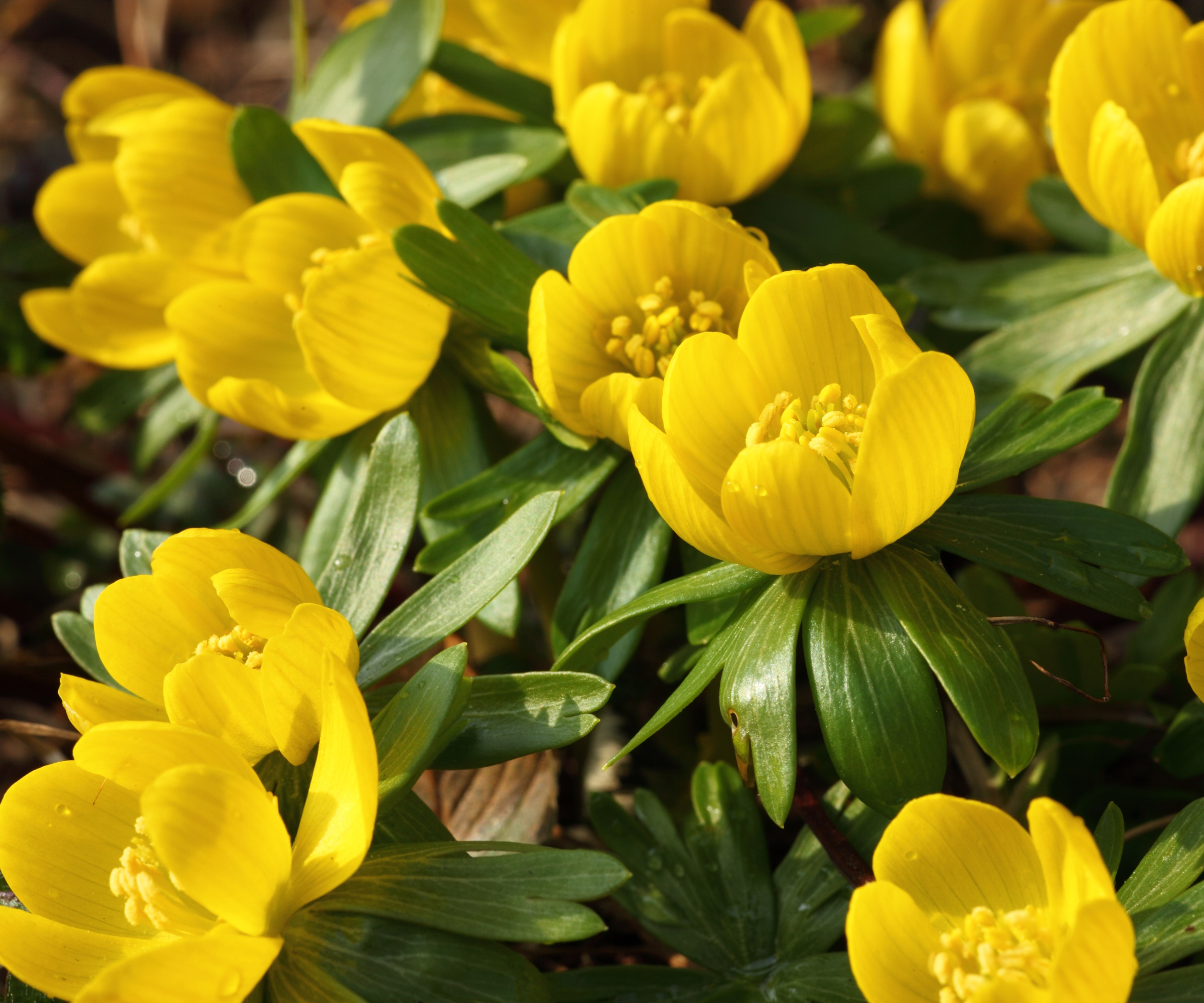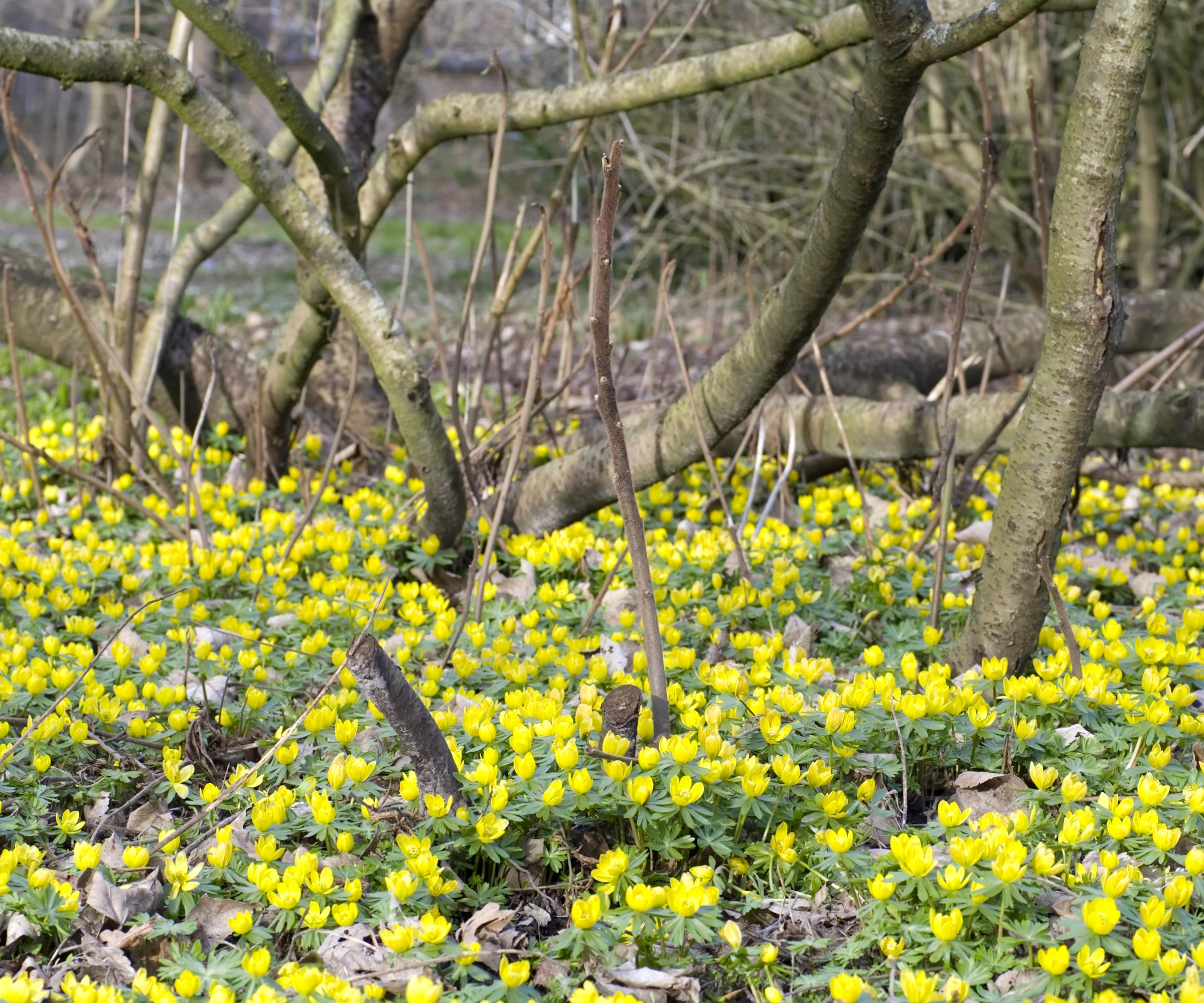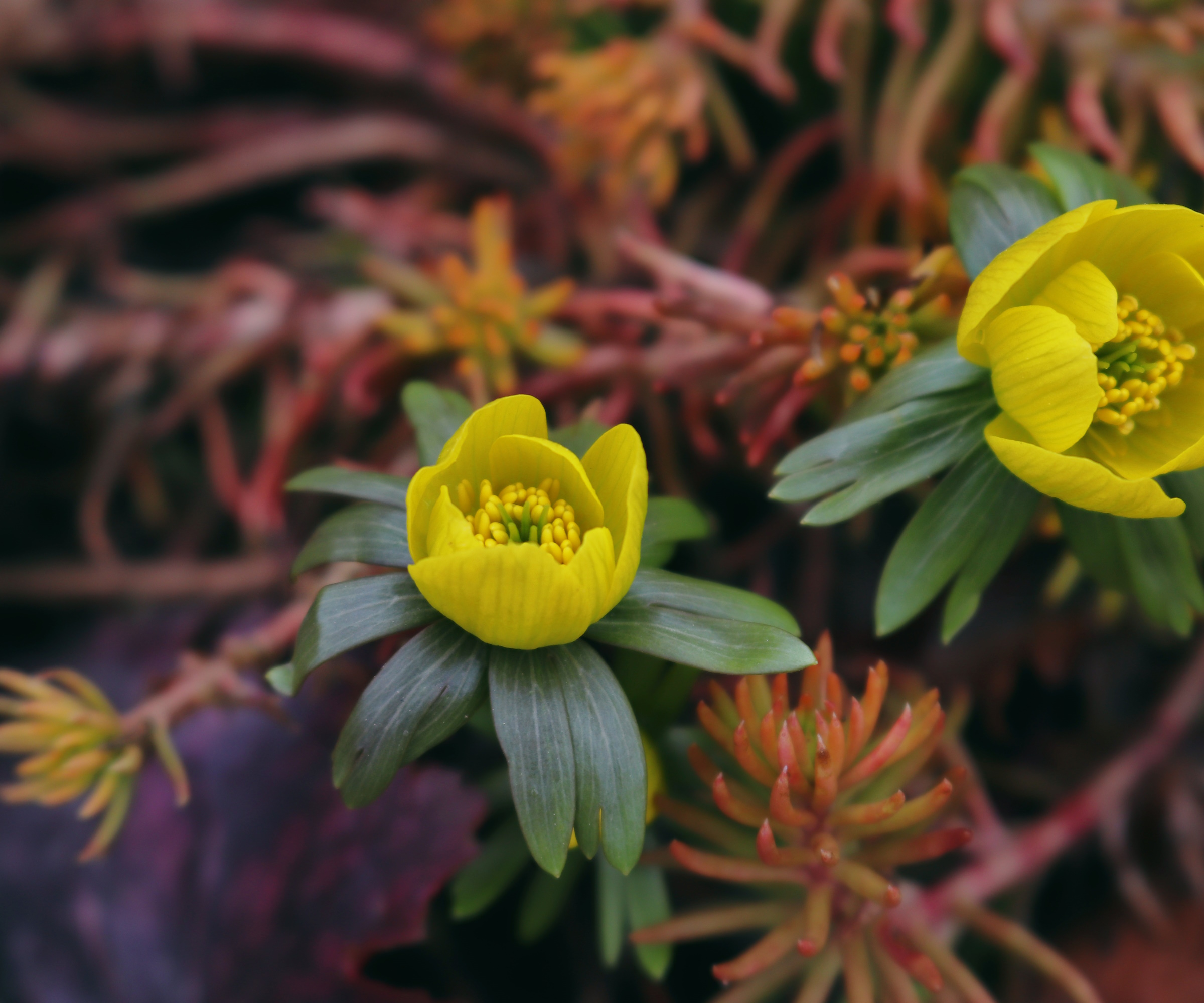How to grow winter aconites – for tiny splashes of sunshine in the garden
These diminutive blooms are ideal for bringing life to your yard in the winter


Blink and you could miss them, but if you pause to look under trees and in flower beds at this time of year, you might just glimpse the tiny yet mighty yellow petals of winter aconites.
One of the first flowers to appear at the start of the year, these miniature blooms closely resemble buttercups, and are indeed part of the buttercup family, Ranunculaceae.
Each solitary, yellow bloom is surrounded by ruffled green bracts, similar to the collars seen on anemones. Like the plants they resemble, they make an ideal addition to a woodland garden or shady path, and are hardy in zones 4-11. These tuberous perennials will often appear in clumps, either in flower beds, under trees or within lawns, and once established they will reappear every year.

How to grow winter aconites
Winter aconites are ground-hugging plants, reaching just three inches off the soil, but what they lack in stem length they make up for in vibrant, golden color.
Where to plant winter aconites

These tiny blooms are fairly low maintenance, but do like a bit of winter sun, so if you can try to plant tubers in areas that will get plenty of light over winter. They work well under deciduous trees, which allow sufficient light to get to the plants in winter.
They are also well suited to rock gardens, and would look at home in a woodland garden setting. Winter aconites combine very well with other early-flowering plants and winter flowers such as snowdrops and hellebores.
‘If you enjoy blasts of cheerful yellow in the winter, consider planting under a mahonia shrub, or a witch hazel,’ says Thomas Rutter, gardener and content editor at Homes & Gardens. ‘Both produce stunning, bright yellow blossom flowers in January and February, and would beautifully echo the sunshine accents underneath.’
Design expertise in your inbox – from inspiring decorating ideas and beautiful celebrity homes to practical gardening advice and shopping round-ups.

Thomas is a Content Editor at Homes and Gardens. He has been working as a gardener and garden writer for several years. Whilst completing his Horticultural Traineeship at the Garden Museum, London, he was able to gain experience at many of the UK's world-famous gardens, including Sissinghurst, Lowther Castle, and Iford Manor. Following this, he worked for two private estates in Tuscany, Italy. During this time, he developed expertise regarding practical gardening and growing in dry and hot climates. He has managed kitchen gardens and cut flower gardens, providing food and flowers to be enjoyed on a daily basis
How to plant winter aconites

These flowers grow from bulbs, which are best planted in the fall. Plant in fairly large groupings to achieve a clustered effect. The bulbs should be planted a couple of inches deep into the soil and 1-3 inches apart. They enjoy moist, well-drained soil and partial shade.
Once established, they should naturalize and spread fairly quickly. Soaking the tubers overnight before planting them can help encourage quicker germination.
A faster way to get these plants growing well in your yard is to buy them ‘in the green’ and plant just after flowering, whilst they are still growing.
After flowering they will naturally die back into the soil, and are best left alone to allow their energy to go back into the bulbs and ensure healthy flowering the following year.
If, after a few years, you want to control the spread a little, you can lift clumps whilst still green and divide these up, replanting in other areas of your yard if you wish.
Popular varieties of winter aconite include Eranthis hyemalis 'Flore Pleno’, which has larger double flowers, and Eranthis hyemalis ‘Schwevelglanz’, which has pale, creamy yellow flowers.
You can buy large bags of winter aconite bulbs from Walmart.
FAQs
Are winter aconites poisonous?
The entire plant and tubers of winter aconites are toxic, so if you have pets or small children in the family, you may want to avoid having these plants in your yard.
Can you grow winter aconites in containers?
Yes, these winter-blooming flowers will grow well in pots and containers provided they have good drainage and are kept in a fairly sunny spot. They would work well in a container when paired with other winter flowers, such as larger hellebores, and some trailing ivy.
They may be tiny, but when nothing else is in flower winter aconites provide a cheerful reminder that spring is just around the corner. Other early-flowering blooms you might want to add your planting schemes this year include snowdrops and glory of the snow.

Rachel is a gardening editor, floral designer, flower grower and gardener. Her journalism career began on Country Living magazine, sparking a love of container gardening and wild planting. After several years as editor of floral art magazine The Flower Arranger, Rachel became a floral designer and stylist, before joining Homes & Gardens in 2023. She writes and presents the brand's weekly gardening and floristry social series Petals & Roots. An expert in cut flowers, she is particularly interested in sustainable gardening methods and growing flowers and herbs for wellbeing. Last summer, she was invited to Singapore to learn about the nation state's ambitious plan to create a city in nature, discovering a world of tropical planting and visionary urban horticulture.